

Sankeien: A Glimpse of Old Japan in a Modern City
|
The port city of Yokohama in Kanagawa Prefecture is the second most populated city in Japan. As part of the Greater Tokyo Area, it serves as a major commercial and economic hub, and houses the headquarters of major Japanese companies. However, did you know that there is a green oasis in the southern part of this sprawling metropolitan city?
Sankeien (三溪園) is a large Japanese-style garden that was established in the early 1900s by silk trader Tomitaro ‘Sankei’ Hara. Born in Gifu in 1868 to an illustrious family, Tomitaro Hara was able to pursue higher education and a teaching career in Tokyo, where he met his wife. Tomitaro took over her family business and modernised it, expanding its reach outside Japan and making it one of Japan’s top silk exporters. In addition to silk trading, he also built and bought weaving mills. With the wealth he amassed, he patronised the arts and invested in his interests, which included tea ceremony, calligraphy, and Chinese classics. His wife’s grandfather owned an entire valley south of Yokohama, where he had a summer house overlooking the bay. When he passed away in 1899, Tomitaro seized the chance to transform the unused land, which consisted mostly of marshland and paddies, into a traditional Japanese garden. He named the park after himself; 三溪 ‘sankei’ came from Tomitaro’s pen name, which in itself was an alternate reading of the property’s original name, and 園 ‘-en’ means ‘garden.’ The park itself covers a space of about 175,000 square meters along Yokohama’s coast. It comprises an Inner Garden and an Outer Garden, and while only the latter was free for the public to roam in when the park opened in 1906, now, visitors can visit both gardens. Once visitors pass through its gates, they are transported into the picturesque Japanese countryside. Trails around the park lead visitors to natural scenes of ponds, small rivers, and an abundance of greenery. The park is known for its seasonal beauty; guests can view camellias and plum blossoms in winter, cherry blossoms and wisterias in spring, hydrangeas and lotuses in summer, and indulge in bright fall colours in the fall. In fact, the entire garden was designated as a National Place of Scenic Beauty of Japan in 2007. However, the allure of Sankeien is not only in its natural beauty, but in the unique buildings on its grounds. Tomitaro and his family actually lived at Sankeien, in a grand residence known as Kakushokaku. It covered 950 square meters and Tomitaro had designed it to be part farmhouse, and part sukiya-zukuri ‘数寄屋造り’ (a type of architectural style favoured by nobility in the early Edo period). Where it was built made it so that it was the first building visitors saw when they entered the park’s grounds. Besides the family’s residences, Tomitaro also built a country-style teahouse known as Yokobuean. It boasts a unique combination of thatched and shingled roofs, and was named for a character in the 1300s epic, “Heike Monogatari.” He also designed and built another teahouse, known as the Hakuuntei, in 1920. Though it was built using traditional construction methods, it incorporated many modern architectural features, such as a telephone compartment, and a bathroom with shower facilities. These are not the only teahouses on the property, as Tomitaro also had a small teahouse, known as the Kinmokutsu Teahouse, built in 1918. Later in 1970, another teahouse, the Rindouan, was donated to Sankeien by the Rindo Group of the Sohen-ryu school of tea ceremony. Over the course of 20 years, Tomitaro would continue to have several historical structures from around Japan relocated onto the garden’s grounds. Sankeien’s three-story pagoda, which is oft-considered the garden’s pièce de résistance, was actually acquired by Tomitaro from the abandoned Tomyoji Temple in Kyoto. Originally built in Kyoto in 1457, it was disassembled and later reassembled on the highest hill in Sankeien in 1914. It is the oldest structure in Sankeien, and the oldest wooden pagoda in the Kanto region. The pagoda served as a guide for subsequent developments, especially in the Inner Garden, where buildings have been designed to have it in view. In 1987, the damaged Main Hall of Tomyoji Temple was also relocated to Sankeien where it was restored to its original form. |
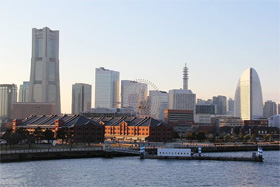 Yokohama © Sam Evans 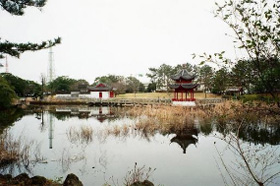 Sankeien © photoAC 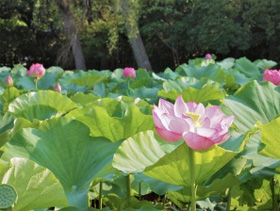 Sankeien © photoAC 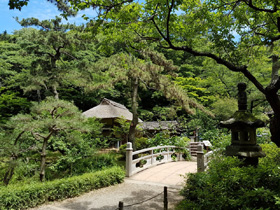 Sankeien © JCC 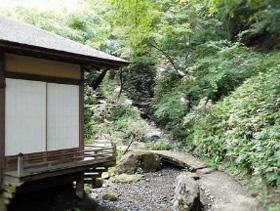 Sankeien © photoAC 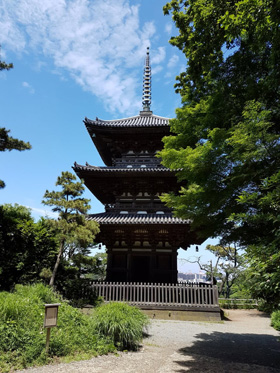 Three-Story Pagoda of the Former Tomyoji Temple © JCC |
|
Those were not the only structures he acquired from Kyoto. The first building that was relocated to Sankeien was actually the Juto Oido Hall of the Former Tenzuiji Temple in Kyoto. It was first built in 1591 but was later abandoned - in 1905, the hall was relocated to Sankeien, in its Inner Garden. The gates that welcomed guests into the Inner Garden were also acquired from a temple in Kyoto. Besides religious structures, Tomitaro also acquired lavish buildings that once stood on castle grounds! The Gekkaden, which was first built on the premises of Fushimi Castle, was relocated to Sankeien in 1918. Later, Tomitaro also acquired the Choshukaku building, which was believed to have first been built on the premises of Kyoto’s Nijo Castle in 1623. The building has unique architectural features; it has a lowered entryway, and uses a mixture of three roof styles! It was relocated to Sankeien in 1922.
Also from the Kansai region, he acquired the Rinshunkaku. The Rinshunkaku is a lavish residential villa that was first built in 1649 in Wakayama. It was moved to Sankeien in 1917; although its interior design was kept intact, the shape of its roof was altered slightly. The Former Yanohara Family Residence, a gassho-style house from Gifu was also relocated to Sankeien in the 1960s. The charming farmhouse with a steep, slanted thatched roof was originally built in the early 1800s and was meant for a farming family. This residence gives visitors a glimpse into traditional homes from rural Gifu Prefecture, without having to travel out of Yokohama City! Tomitaro also acquired some buildings from other parts of Kanagawa Prefecture. In 1907, Tomitaro relocated the Buddhist Sanctum of the Former Tokeiji Temple in Kamakura to Sankeien. It had become difficult to maintain the 200-year-old structure in its original location, and so it was moved to Sankeien, where it served as a place for Buddhist priests to preach. Later in 1916, the Zen Buddhist Hall of Shinpeiji Temple in Kamakura was also relocated to Sankeien. |
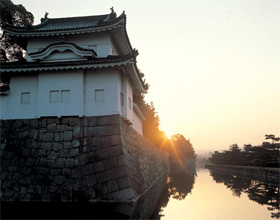 Nijo Castle © Mizuno Katsuhiko 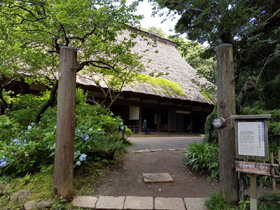 Former Yanohara Family Residence © JCC 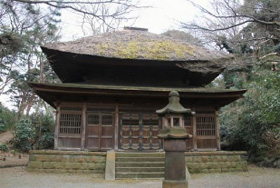 Buddhist Sanctum of Former Tokeiji Temple © photoAC |
| Many of these historic buildings have been designated as important cultural sites on not only a prefectural level, but on a national level. Even in a city surrounded by modern skyscrapers that climb toward the sky, Sankeien is a place where visitors can travel to the past and explore buildings that people lived, prayed, and spent time together in hundreds of years ago. |
Resources
|
Gleason, A. His Own Private Minka-en: Sankei Hara's Fabulous Garden. Retrieved 27 May 2021, from https://artscape.jp/artscape/eng/ht/2102.html |
|
Japan Creative Centre 4 Nassim Road, Singapore 258372 +65 6737 0434 / jcc@sn.mofa.go.jp https://www.sg.emb-japan.go.jp/JCC/ Nearest parking at Orchard Hotel & Delphi Orchard |
 |